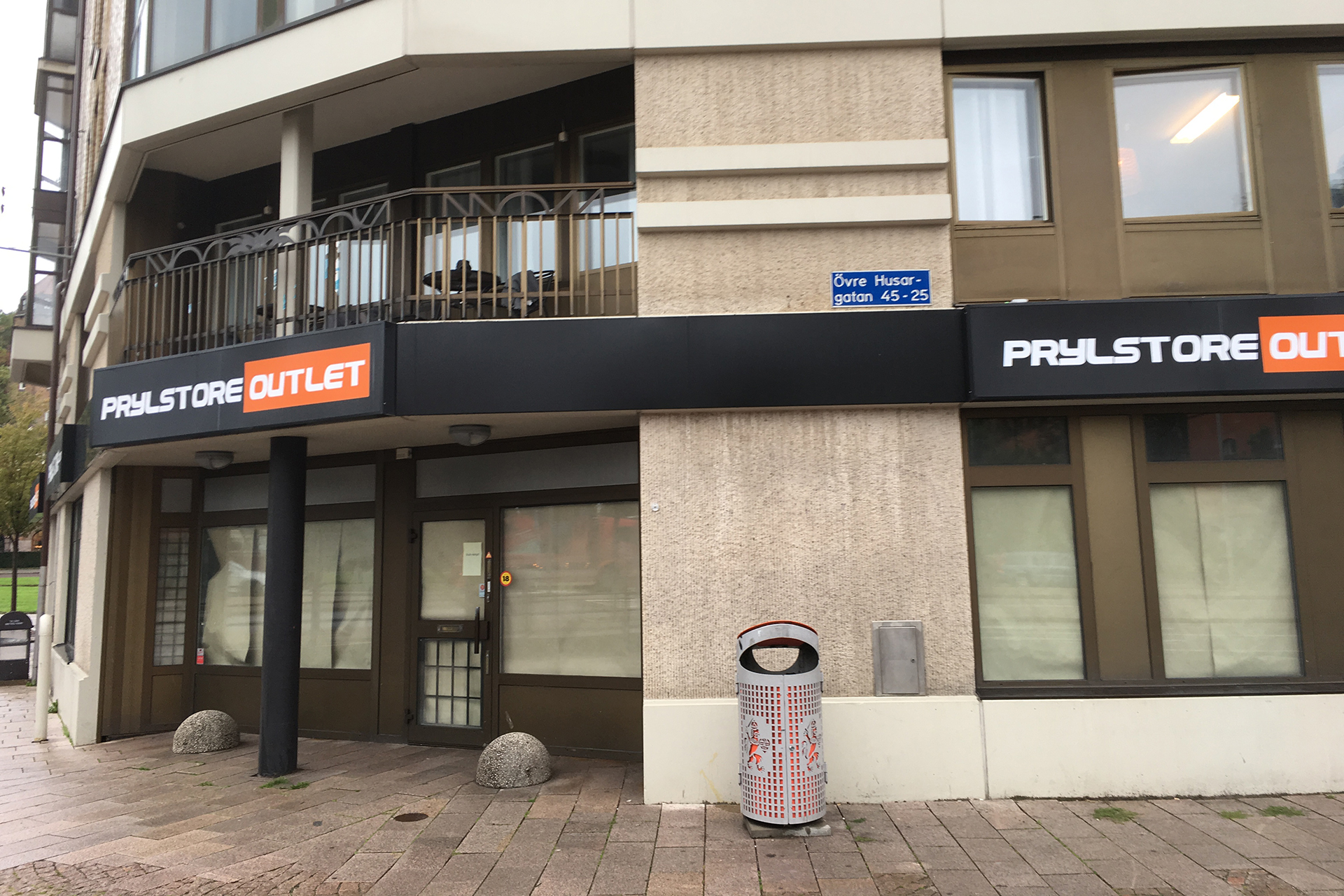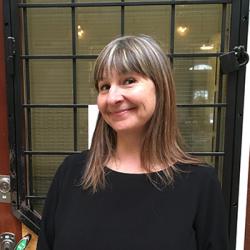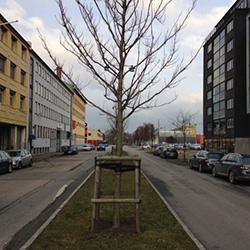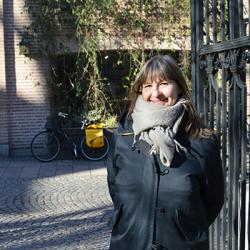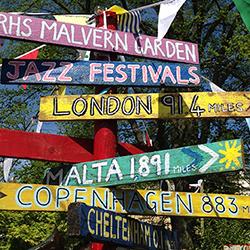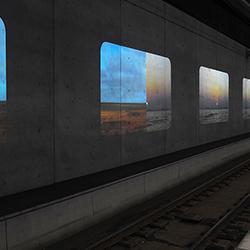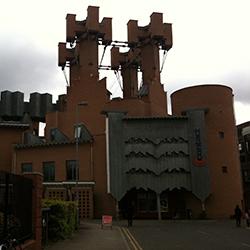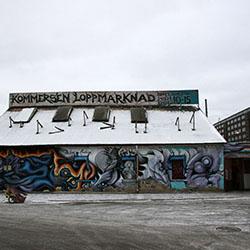In many central areas of our cities, shops are closing down in an accelerating rate – but might that actually be beneficial for the local culture? At a panel session on the role of culture in urban development at the Gothenburg City Triennal, the conversation repeatedly re-bounded to the fundamental conflict between economic growth and sustainable development.
Today’s hard pressure on exploitation is likely to contribute to a fragile development, as culture in various expressions is not able to be a part of an inclusive community building. But maybe a change is on its way? The temperature rose in the conversation between Rudolf Antoni, Vice President of the Real Estate Owners Association and the other three participants in the panel session.
“The real estate industry is driven by economic gain and sees the value of culture as a way to find the essence of the place. But it wants to see a return on its investments, so who's going to end up with the short straw”, Rudolf Antoni wondered, referring to the emphasis on financial responsibility for cultural space, studio buildings and rehearsal rooms. These are often premises for which it is difficult to collect market rent.
Nazem Tahvilzadeh, researcher at KTH and Victoria Percovic, White Architects both believed that it was a derogatory term to use, but Rudolf Antoni claimed he should not be misinterpreted. He regarded himself as an advocate for culture and thought it was better to consider where capital could be useful for this purpose instead of trying to educate property owners. Victoria Percovic said that our economic system with its short-term quarterly economy is negative to the culture of a sustainable city. Instead, we need to find new ways to count the value of culture similar to the system used for the environment.
“You should not be able to not choose culture”, she said with emphasis.
Nazem Tahvilzadeh agreed to this and meant that the market could not handle the situation. Instead, he called for the state and municipalities to take responsibility. Sara Schütt, Development manager of Cultural Affairs addressed the possibility of using exploitation agreements and landmarks as tools in the process. She also highlighted good experiences of the 1% rule in Gothenburg, requiring city companies and administrations to allocate 1% of the construction cost for cultural activities and artwork.
White, male and capitalist
Rudolf Antoni pointed out the possibility of using BID (Business improvement district). This means that shops along a street, sometimes together with property owners and the municipality, jointly merge to business development of the site and increase the attraction with clean, safe and stylish as the motto.
He envisioned a cultural BID to finance culture in the city and resolving the economic dilemma but was immediately contradicted by Nazem Tahvilzadeh.
“It's not about saying yes or no to BID. It is about problematizing the culture that is already built into our cities. It sits in each brick, each screw and nail, and prioritizes the values that will be entered. That culture is white, male and capitalist. Where do you get money that builds tall towers or mega institutions that can never carry their own costs? From society”, said Nazem Tahvilzadeh.
He instead called for support for places where culture is being built, such as the library where the teenager borrows a book or rehearsal rooms where they can play the guitar.
“Give the culture space to be what it is meant to be – free”, he said.
Sara Schütt thought it was a political question. But as an employee, her task is to show conflicts of purpose when the city is being built and developed. Then Rudolf Antoni presented the possibility of empty stores.
“What should we do with all the empty shops when the market tips over?”, he asked, and pointed out that the market's tipping points at the same time are the opportunity for culture to take place in the city because property developers are not at all uninterested of culture.
One man’s gain is another man’s loss
Reflecting on the focus of the panel session, will the closing of stores be the opportunity for culture? Is the result of our changed shopping behavior, the e-commerce, the opportunity that cultural workers need? One can conclude that when the consumer society is becoming more virtual, culture still need physical production sites in real life. Preferably in central areas, in old houses with historical presence and a low rent. It showed in our report: Will the culture get its space in the new city? https://www.mistraurbanfutures.org/sv/nyheter/platsar-kulturen-i-den-ny…
Our cities can not only accommodate businesses with high rents like large clothing chains, coffee shops, gyms and beauty salons. There is a limit to how many false nails we need per finger and how many cups of coffee we can drink in one day. Bottom-up cultural activities take time to build in a city but they create context and identity, something that is increasingly in demand in a democratic community. Cultural activities can help to reduce segregation. Planning for culture to grow in a certain place can be difficult, but creating conditions for the one already existing is not impossible.
Is it finally time to make space and appreciate the opportunity for culture to contribute to a sustainable city?
-------------------------------------------------------------------------------------------------------------
Photos: Ylva Berglund
This text was first published at the Museum of Gothenburg's website.
The Museum of Gothenburg is a part of the City of Gothenburg, the main local political authority in Mistra Urban Futures Gothenburg consortium.
The main objective of the Culture Hub is to build a sustainable platform between the City of Gothenburg and the University of Gothenburg for collaboration, learning, method and theory development on the role of culture and cultural activities for sustainable urban development, especially focusing on the development and implementation of a cultural impact assessment tool – (KKA).
Ylva Berglund works as a curator and coordinator at the new Urban Development Unit, a part of Gothenburg Cultural Services Department. She is the Co-Project Manager for the The Culture hub, Culture and Cultural Heritage for sustainable Cities step 2 at Mistra Urban Futures, together with Niklas Sörum, PhD, researcher and senior lecturer, Center for Consumer Research (CCR), Gothenburg Research Institute (GRI)
